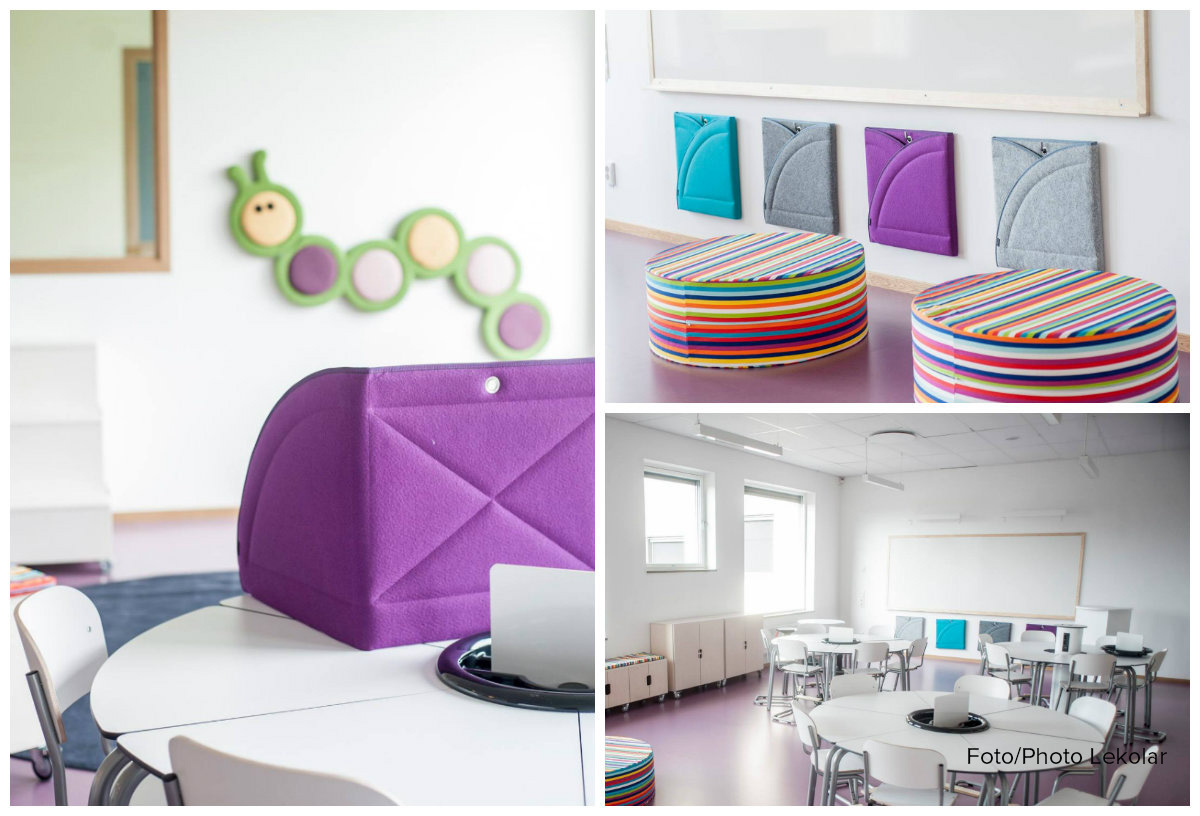Furnishings for an NPF adapted classroom
In school, children with ADHD, autism and dyslexia often face unreasonable demands that increase stress and exacerbate their symptoms. Traditional classroom furniture with rigid rows of desks is a challenge for these students. Adapting the classroom to the needs of NPF students creates a better school experience for all.
Flexible and varied furniture creates an inclusive learning environment where all students can learn and grow as individuals.
Here are some interior design suggestions for an NPF adapted classroom:
1. zoning
Create zones for different learning situations such as individual work, group work and whole class teaching.
Divide the classroom with sound-absorbing floor screens and hanging room dividers, leading to reduced distraction and increased concentration. For these learners, clarity and structure are very important and benefit everyone.
2. Varied workplaces that encourage movement
Create different workspaces for concentration, individually or in groups, leading to less distraction and increased focus on the task.
Furnish with height-adjustable tables, preferably with a table screen to reduce noise and visual distraction, and other movement-stimulating furniture such as desk bikes.
Alternative seating such as balance stools or pilates balls reduce anxiety and restlessness.
Standing desks increase energy levels and concentration.

3. Create a good sound environment
Reduce noise and disturbing sounds with,
Sound-absorbing desk screens which help to increase concentration by reducing noise and visual distraction while creating both a personalized and flexible workspace for one or more students.

Wall-mounted sound absorbers dampen sound, reduce reverberation time and create a comfortable sound environment. They can also be a stimulating and appealing interior design feature.

Sound-absorbing floor screens reduce the volume of normal conversation and distracting noises. They also help create a flexible and personalized learning environment.

Hanging sound-absorbing room dividers that create shielded workspaces in the classroom.
Upholstered furniture, textiles and cushions dampen sound while creating a pleasant interior environment.
4. furnishing for different activities
Group boards facilitate collaboration and include the whole group.
Reading corner with soft seating and wall-mounted sound absorbers reduce noise levels and create a calm atmosphere.









